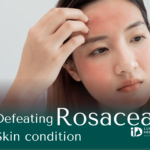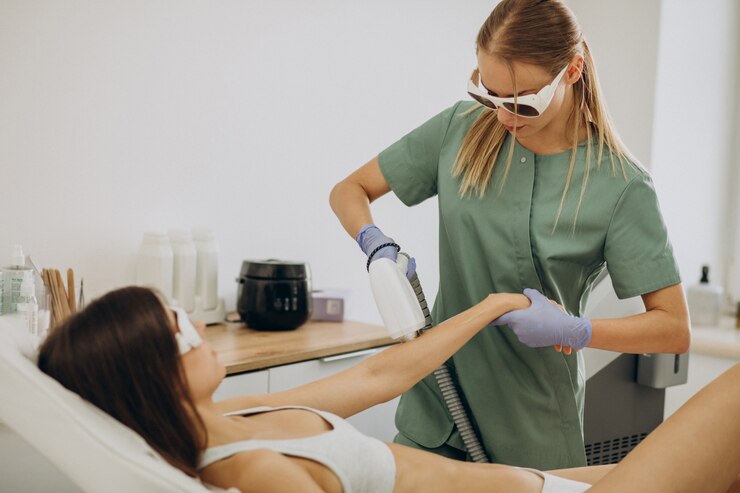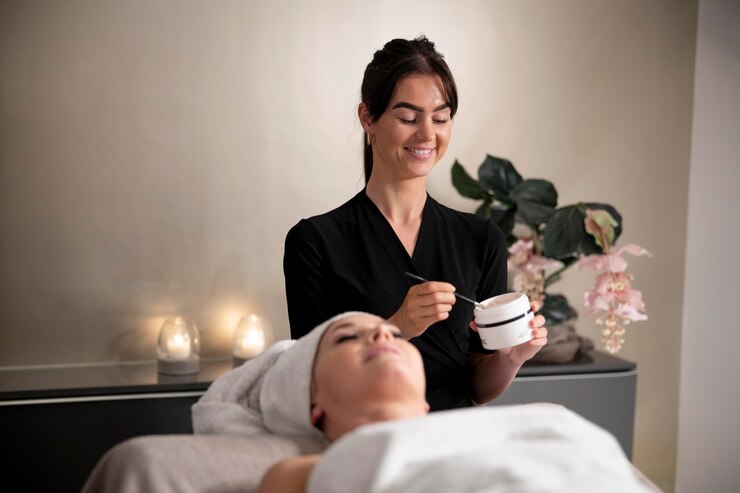Facials have long been a cornerstone of skincare, offering a relaxing and rejuvenating experience while addressing various skin concerns. However, not all facials are created equal. Two primary categories - classic facials and medical-grade facials - cater to different needs and goals. Understanding the distinctions between these two types of treatments from following classic facials …
Facials have long been a cornerstone of skincare, offering a relaxing and rejuvenating experience while addressing various skin concerns. However, not all facials are created equal. Two primary categories – classic facials and medical-grade facials – cater to different needs and goals. Understanding the distinctions between these two types of treatments from following classic facials vs medical grade facials comparison can help you make an informed decision about which one is best suited for your skin.
In today’s skincare cosmetics world, the choice of facial options like classic and medical grade facials can feel overwhelming. From luxurious spa experiences to clinical grade treatments, choosing the right facial b/w the two depends on your specific skin concerns, desired results, and lifestyle. This classic facials vs medical grade facials comparison dives deep into the differences between classic facials and medical-grade facials, shedding light on their unique benefits and helping you decide which is the perfect fit for your skincare journey.
What Are Classic Facials?
Classic facials, often referred to as spa facials, are a traditional approach to skincare. These treatments focus on relaxation, surface-level skin improvement, and an overall sense of well-being. They are typically offered in spas, salons, or wellness centers and are performed by trained aestheticians.
Steps in a Classic Facial:
- Cleansing: Removes Dirt, makeup, and impurities from the skin.
- Exfoliation: Gently sloughs off dead skin cells using physical or mild enzymatic exfoliants.
- Steam: Opens up pores to prepare the skin for extractions.
- Extractions (Optional): Clears out blackheads and clogged pores.
- Massage: Promotes blood circulation and relaxation.
- Mask: Tailored to the client’s skin type, such as hydrating, soothing, or detoxifying.
- Moisturizing and Sun Protection: Ensures the skin is hydrated and protected post-treatment.
Benefits of Classic Facials:
- Immediate but temporary results like glowing, hydrated skin.
- Relaxation and stress relief.
- Suitable for all skin types, especially those without significant concerns.
- Affordable compared to medical-grade treatments.
Despite their advantages, classic facials are generally superficial in nature. They are excellent for maintenance but do not provide lasting solutions for deeper skin issues.
What Are Medical Grade Facials?
Medical grade facials are advanced skincare treatments performed in clinical settings, such as dermatology clinics, medical spas, or cosmetic surgery offices. The Medical Grade facials go beyond the surface level care by addressing specific skin issues/concerns and improving overall skin health. They are administered by licensed medical professionals or certified medical aestheticians under the supervision of a doctor.
Steps in a Medical-Grade Facial:
- Consultation and Skin Analysis: An in-depth assessment of your skin concerns, medical history, and goals.
- Cleansing and Exfoliation: Prepares the skin for deeper penetration of active ingredients.
- Active Treatments: Incorporates advanced technologies like:
- Chemical Peels: To treat pigmentation, fine lines, and acne.
- Microdermabrasion: For improving skin texture and tone.
- Microneedling: To stimulate collagen production.
- LED Light Therapy: To reduce inflammation and promote healing.
- HydraFacial: Combines cleansing, exfoliation, hydration, and extraction in one session.
- Serums and Active Ingredients: Uses medical-grade products with higher concentrations of active ingredients like retinol, hyaluronic acid, and peptides.
- Post-Treatment Care: Often includes medical-grade moisturizers and SPF to protect and nourish the skin.
Benefits of Medical-Grade Facials:
- Addresses specific skin conditions like acne, hyperpigmentation, and aging.
- Delivers long-term results by targeting deeper layers of the skin.
- Uses scientifically backed formulations and technologies.
- Tailored to individual skin needs for maximum effectiveness.
While medical-grade facials can be transformative, they are often more expensive and require a series of treatments for optimal results.
Key Differences Between Classic and Medical Grade Facials
1. Purpose and Goals
- Classic Facials: Designed for relaxation and surface-level enhancement. The primary goal is to leave your skin feeling refreshed and hydrated.
- Medical-Grade Facials: Aim to treat specific skin concerns and improve long-term skin health through advanced techniques and formulations.
2. Ingredients and Products
- Classic Facials: Use over-the-counter products that are mild and suitable for general use.
- Medical-Grade Facials: Employ clinical-grade products with higher concentrations of active ingredients, such as retinoids, AHAs, and BHAs, which penetrate deeper into the skin.
3. Techniques and Technology
- Classic Facials: Rely on manual techniques like massage and basic exfoliation.
- Medical-Grade Facials: Incorporate state-of-the-art equipment and procedures, such as laser therapy, dermaplaning, and microneedling.
4. Customization
- Classic Facials: Follow a more standardized approach, although some customization may occur based on skin type.
- Medical-Grade Facials: Are highly personalized, with treatments tailored to your unique skin condition and goals.
5. Administration
- Classic Facials: Performed by licensed aestheticians in non-medical settings.
- Medical-Grade Facials: Administered by medical professionals or certified aestheticians under medical supervision.
6. Results and Longevity
- Classic Facials: Provide immediate but temporary results, ideal for short-term improvements.
- Medical-Grade Facials: Deliver long-lasting results, especially when performed as part of a series or combined with other treatments.
When to Choose a Classic Facial
Classic facials are perfect if you:
- Want a relaxing and pampering experience.
- Have generally healthy skin with no major concerns.
- Are looking for an affordable option to maintain your skin’s glow.
- Need a quick boost before a special occasion.
When to Choose a Medical Grade Facial
Medical-grade facials are ideal if you:
- Are dealing with specific skin issues like acne, rosacea, or hyperpigmentation.
- Wish to minimize signs of aging, such as fine lines and wrinkles.
- Want to achieve significant, long-lasting results.
- Are comfortable investing in advanced treatments and follow-up care.
Combining Classic and Medical Grade Facials
In some cases, combining both types of facials can provide a balanced approach to skincare. For instance, you can enjoy classic facials for relaxation and maintenance while incorporating medical-grade facials periodically to address deeper concerns. This strategy ensures your skin remains healthy, radiant, and well-cared for. There are also other Facial treatments like HydraFacial MD, Rosacea Treatment and many others which are beneficial for various concerns.
The Role of Professional Guidance
Choosing the right facial often requires professional advice. A consultation with a licensed aesthetician or dermatologist can help you identify your skin type, understand your concerns, and determine the most effective treatments. They can also recommend complementary skincare products to maintain the benefits of your facials.
Additionally, professionals can monitor the progress of your skin over time, adjusting treatments as needed to suit changing conditions or concerns. This level of expertise ensures that you receive a tailored approach, maximizing the benefits of each facial and providing you with the confidence that your skin is in capable hands.
The Importance of Regular Skincare Maintenance
While facials can provide significant benefits, maintaining healthy skin requires a consistent skincare routine. Daily habits, such as cleansing, moisturizing, applying sunscreen, and exfoliating regularly, are crucial for preserving the results of your treatments. Incorporating professional facials into your routine—whether classic or medical-grade—can amplify these efforts, ensuring your skin remains vibrant and youthful over time. Regular follow-ups with a skincare professional can also help you adapt your routine as your skin’s needs evolve.
Moreover, adopting a healthy lifestyle, including proper hydration, a balanced diet, and adequate sleep, can enhance the effectiveness of your skincare routine. When combined with regular facials and professional guidance, these habits contribute to long-term skin health and a radiant complexion.
Conclusion
Both classic facials and medical-grade facials have their unique benefits as we have seen above in classic facials vs medical grade facials comparison, catering to different skincare needs and goals. Classic facials offer relaxation and immediate results, making them ideal for general maintenance and pampering. On the other hand, medical-grade facials provide targeted, long-term solutions for complex skin issues using advanced techniques and formulations.
Ultimately, the choice between the two depends on your skin’s condition, your goals, and your budget. By understanding the key differences and consulting with skincare professionals, you can craft a personalized skincare routine that combines the best of both worlds, ensuring your skin looks and feels its absolute best.







